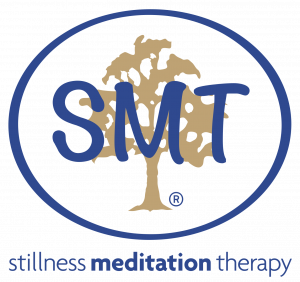From Fear to Freedom
With an engaging smile, one of our regular clients said to me recently, “I like to keep coming here often – this is my brain gym”! What a great way to summarize meditation, a regular fitness skill, just made for our brain.
And why do we need that regular brain gym? To manage stress of course, because no life ever escapes the influence of stress – and here’s the how and why of it all. Stress, if not managed, is a trigger for fear; fear then converts to anxiety, anxiety leads to raised tension levels and tension in turn, raises anxiety further. These combined influences produce the debilitating symptoms we hear of so often today … those negative mental disturbances that fill the daily news, the many physical illnesses related to stress and, very significantly, the current epidemic of depression.
In my blogs over recent months I’ve regularly referred back to my own triumph over agoraphobia, a defense mechanism which is probably the most life-limiting of all mental or emotional disorders. It seems important to remind readers of this achievement, not only that I was enabled to conquer fear but that the remedy has lasted for well over 30 years despite many challenging events, any of which could have resulted in the ‘stress’ reaction – had I not learned to manage it all with ease.
And so I feel the need again to draw attention to the prevalence of mental disorders within society today. People are succumbing to the stressful events within their lives and therefore to unnatural levels of anxiety. And so the enjoyment of life is spoiled, relationships are destroyed, work-life becomes challenging, recreation becomes arduous and the ability of many to live and love and feel satisfied with their contribution to existence is sadly compromised.
Last month I talked about burnout which is one result of the stress reaction. Like all stress reactions, burnout is filled with negative emotions, most prominently, frustration and helplessness. If these are major emotions in what we know as burnout, then anger and regret are two major emotions that lead to anxiety. Think about that – if you are anxious, then you are also feeling the power of anger and regret. But usually these emotions are not recognized and dealt with respectfully so they become internalized and fester away while generating the intense symptoms that surround fear … most notably a chronic state of emergency and varying degrees of depression.
Here are some thoughts I wrote in my book In Stillness Conquer Fear, first published to some acclaim in 1983 – and still helping people change their lives. The chapter I refer to here begins with the following observation by 16th Century philosopher, Michel de Montaigne.
A man who fears suffering is already suffering what he fears …
and this well and truly applies to unmanaged stress.
I think we can understand the effect of stress through the parallel meaning of stress as it has always been used by engineers to describe the interaction of force and resistance. An engineering student is taught that a piece of steel will change shape under stress, and when that stress is removed the piece of steel will resume its original shape. When again subjected to a greater stress, steel will react to that stress by stretching or bending more than it did the first time, but will return perfectly to its natural form when the stress is removed. And so on it goes, giving way and stretching under the stress in a perfectly elastic manner, always returning to its original form, until the point of stress is reached where the steel yields; it goes beyond its elastic limit and its form is changed and will not return to the original. It could be said that the steel is then permanently deformed. However, the essence of the material is unchanged, and with heat and human skill the steel can be reconstituted and brought back to its original shape, to perform in the same resilient manner as it did before it was stressed beyond its limit.
While far removed from steel, we too have an elastic limit — and an enormous ability to cope with many demands of life before reaching that limit. But if we are not handling those demands with ease, stress will begin to have adverse effects upon us. However, the way stress will affect us, or the degree of stress required before we reach our elastic limit, will depend upon each individual’s ability to cope with the demands placed upon us. What is stressful for one may not be so for another. Something that is an exciting challenge to one person may be a massive problem to the next. A busy life to one may be a very easy life to someone else.
Stress, for many, can be the prompt for or the companion to devastating illness, bereavement or personal heartbreak. Others experience tragedy, disaster or violence. Many more know the stress that comes of poverty, deprivation, broken homes and unemployment.
Or stress can result from lesser demands. ‘Stress’ can mean something as minor as a new day beginning with the milk boiling over on the stove – and range further to the effect of pressure from advertising, personal decision making, conflicts within relationships, dissatisfaction at work, poor communication, peer-group demands, expectations of women (liberated or otherwise, there are still expectations), and difficulties for men as a result of this. There is also the manipulative rivalry of the business world and the abandonment of former traditions which previously represented security.
The digital age brings challenges, too, where we must contend with many newer elements that can aggravate the stress of life: telecommunications, the speed of transport and travel, computerization, countless appliances and gadgets, awareness of matters such as global warming, loss of peace within the wider world and issues of health such as the electro-magnetic field effect on human existence. Knowledge is marvellous to possess, but if we are not easily handling what is asked of us personally, this can add fuel to the fire of stress – and we begin to suffer what we fear – as we reach our elastic limit.
When under stress we can feel fragile and fatigued and so we fear an inability to cope with all we have to do … we are suffering what we fear. And this is how at the Stillness Meditation Therapy Centre we see so many people arrive for their first consult in agitation, a fear-filled expression on their face and lots of self doubt. But equally, in time, we see those same people find calm, see the ease appear in their features and see them begin to grow in ease and fulfilment.
It’s what we do to manage stress that counts. No pills or potions, no excessive measures, even including some ‘accepted’ treatments, can replace ‘brain gym’ – one’s natural, inner strength.
Choose freedom and feel the tension release, feel the fear recede and feel calm control. But more than feel … experience it, because in all growing and healing, first we have to be shown the way.


